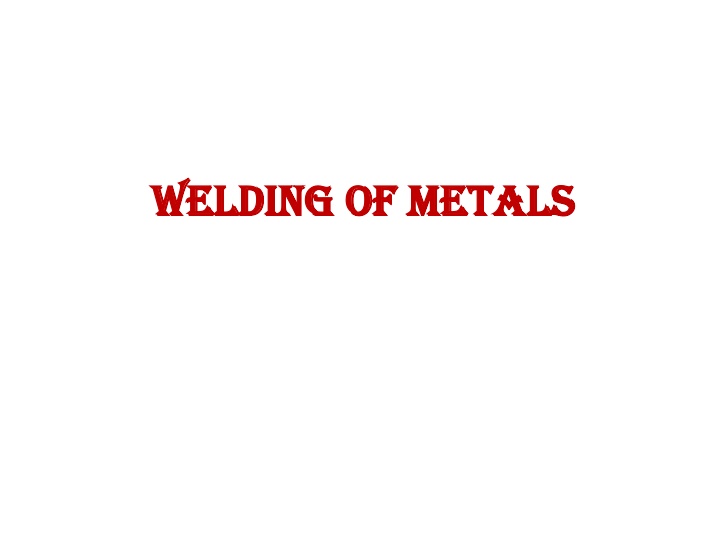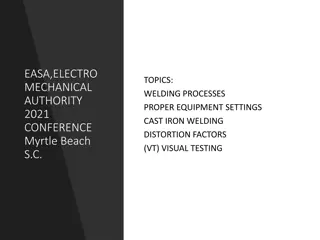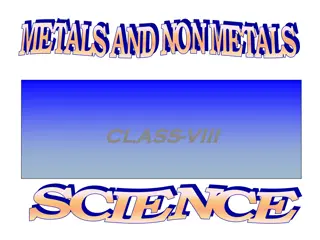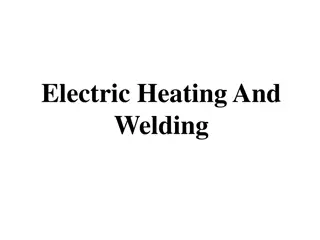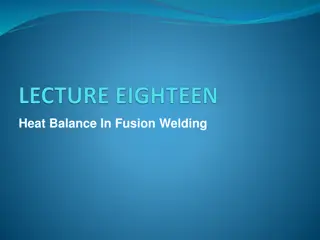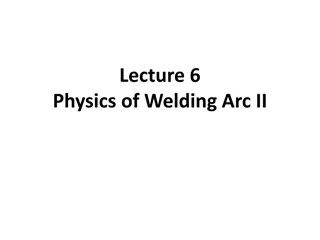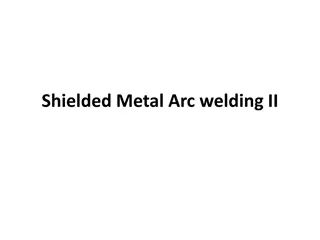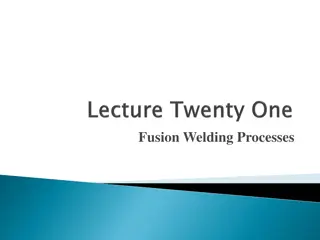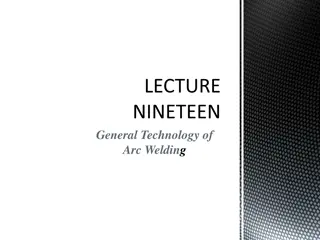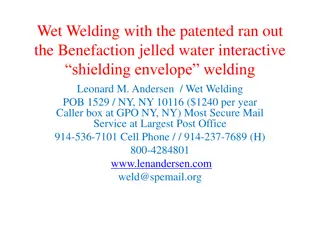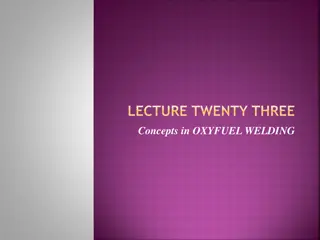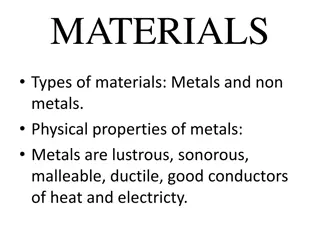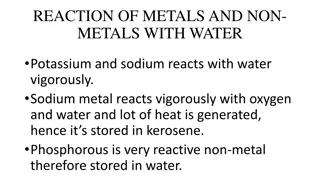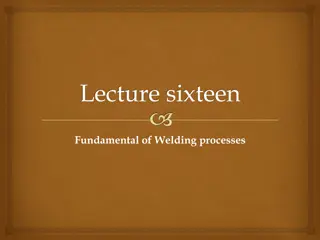Welding of Metals: Joining and Heating for Fusion
Welding is the process of joining metal pieces by bringing them close and heating to fusion. The key features include lightweight structures, high efficiency joints, ease of modifications, great strength, rigidity, and time efficiency. Welding finds applications in manufacturing machine tools, auto parts, buildings, boilers, appliances, and more. Gas welding, such as oxy-acetylene welding, utilizes oxygen and acetylene for heating metal, and requires apparatus like cylinders, gauges, torch, regulators, and goggles.
Download Presentation

Please find below an Image/Link to download the presentation.
The content on the website is provided AS IS for your information and personal use only. It may not be sold, licensed, or shared on other websites without obtaining consent from the author.If you encounter any issues during the download, it is possible that the publisher has removed the file from their server.
You are allowed to download the files provided on this website for personal or commercial use, subject to the condition that they are used lawfully. All files are the property of their respective owners.
The content on the website is provided AS IS for your information and personal use only. It may not be sold, licensed, or shared on other websites without obtaining consent from the author.
E N D
Presentation Transcript
Welding of Metals Welding of Metals
Welding Welding is the process of joining together pieces of metal or metallic parts by bringing them into intimate proximity and heating the place of content to a state of fusion or plasticity
following are the key features of welding: The welding structures are normally lighter than riveted or bolted structures. The welding joints provide maximum efficiency, which is not possible in other type of joints. The addition and alterations can be easily made in the existing structure. A welded joint has a great strength. The welding provides very rigid joints. The process of welding takes less time than other type of joints.
largely used in the following fields of engineering: Manufacturing of machine tools, auto parts, cycle parts, etc. Fabrication of farm machinery & equipment. Fabrication of buildings, bridges & ships. Construction of boilers, furnaces, railways, cars, aeroplanes, rockets and missiles. Manufacturing of television sets, refrigerators, kitchen cabinets, etc.
Classification according to source of energy employed to heating the metal
Gas Welding Oxy-acetylene Welding: CaC2 + 2H2O = Ca (OH)2 + C2H2 C2H2+2.5O2= 2CO2+H2O(vapour)+ 306.800 cal /mol
Gas welding Apparatus 1. Oxygen cylinder 2. Acetylene cylinder 3. Pressure gauges 4. Valves 5. Hose pipes 6. Torch 7. Welding tip 8. Pressure regulators 9. Lighter 10. Goggles
ELECTRIC ARC WELDING The welding in which the electric arc is produced to give heat for the purpose of joining two surfaces is called electric arc welding.
Principle of Arc A suitable gap is kept between the work and electrode A high current is passed through the circuit. The electric energy is converted into heat energy, producing a temperature of 3000 C to 4000 C. This heat melts the edges to be welded and molten pool is formed. On solidification the welding joint is obtained
Electric Power for Welding AC current or DC current can be used for arc welding. For most purposes, DC current is preferred. D.C. machines are made up to the capacity range of 600 amperes. 45 to 95 volts D.C. current can be given in two ways: (a) Straight polarity welding. (b) Reverse polarity
Arc welding power supply by 2 types For Thin Metals
Types of Electrodes Coated electrodes Bare electrodes
TYPES OF JOINTS Butt Joint
TYPES OF JOINTS Lap joint Corner joint T- joint
